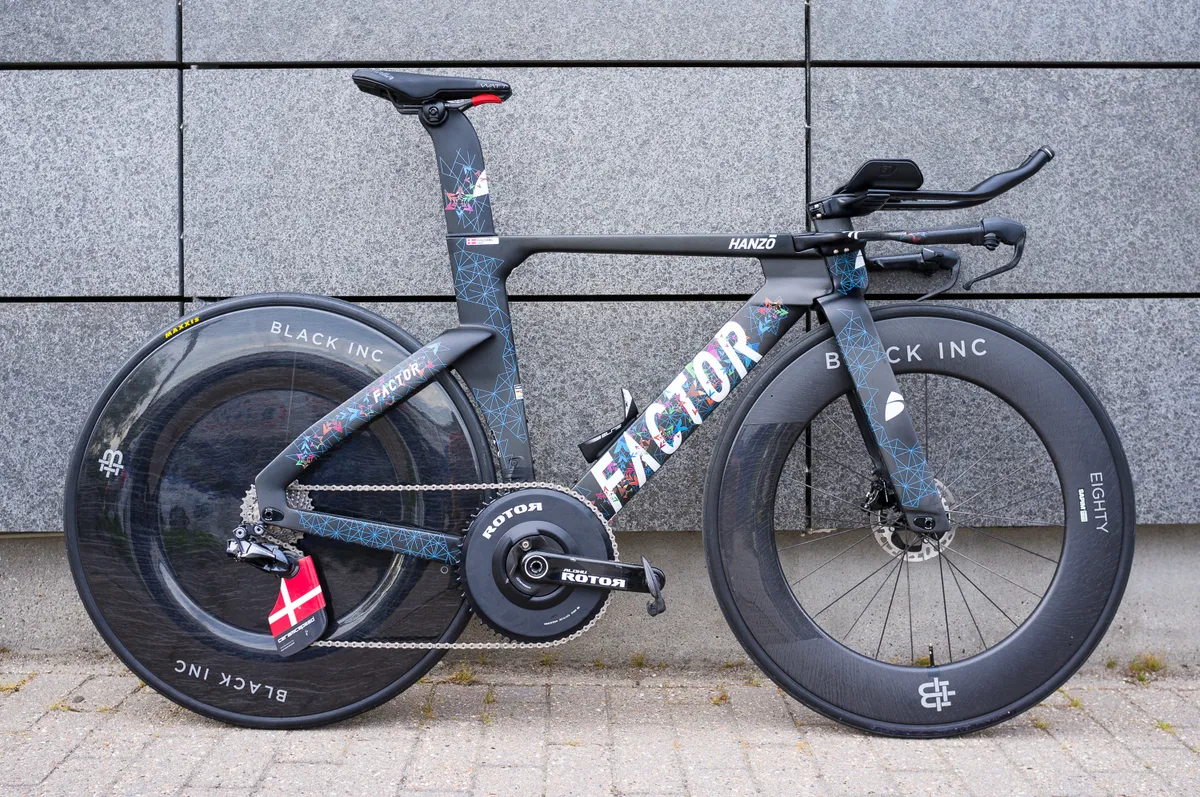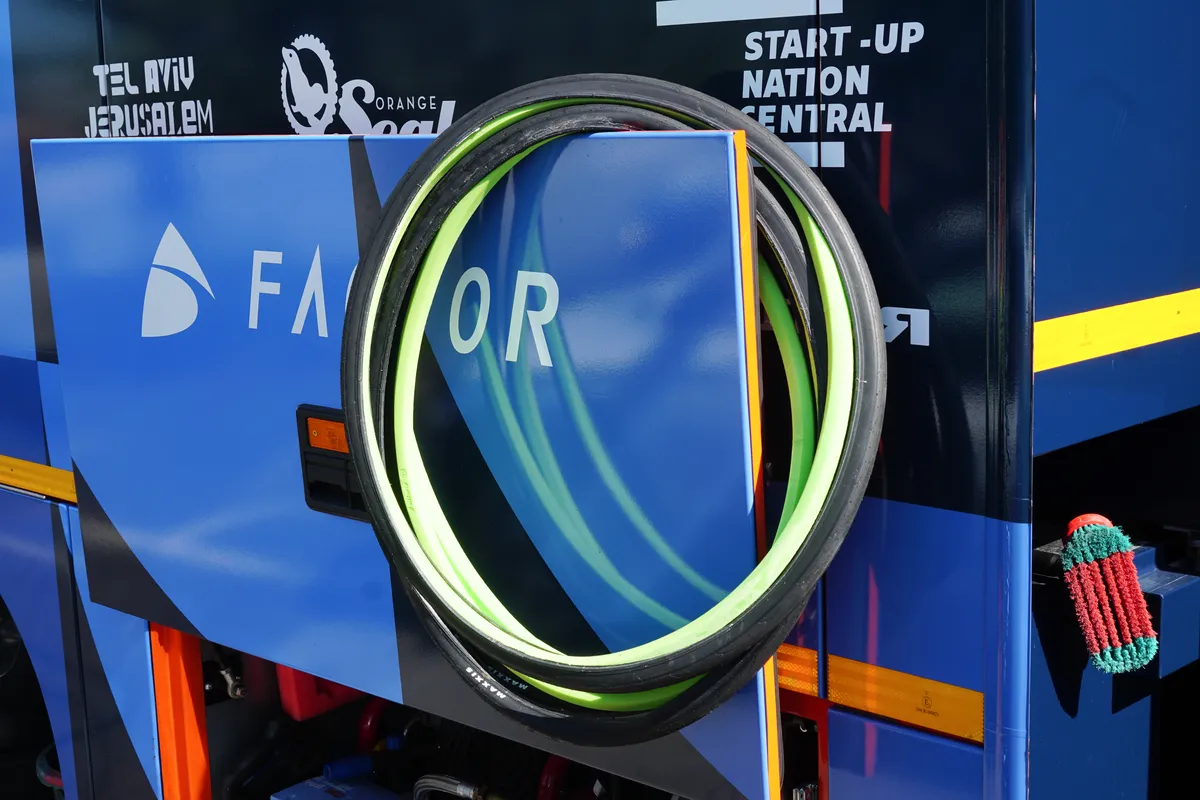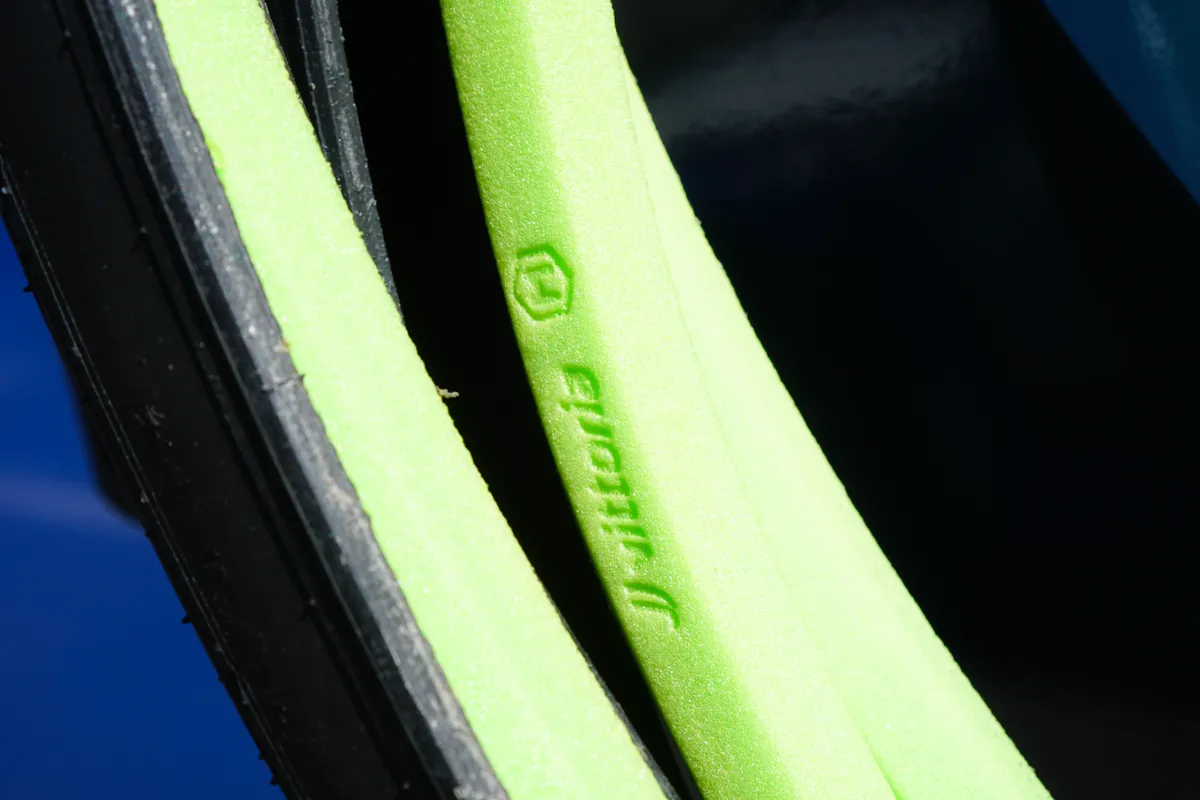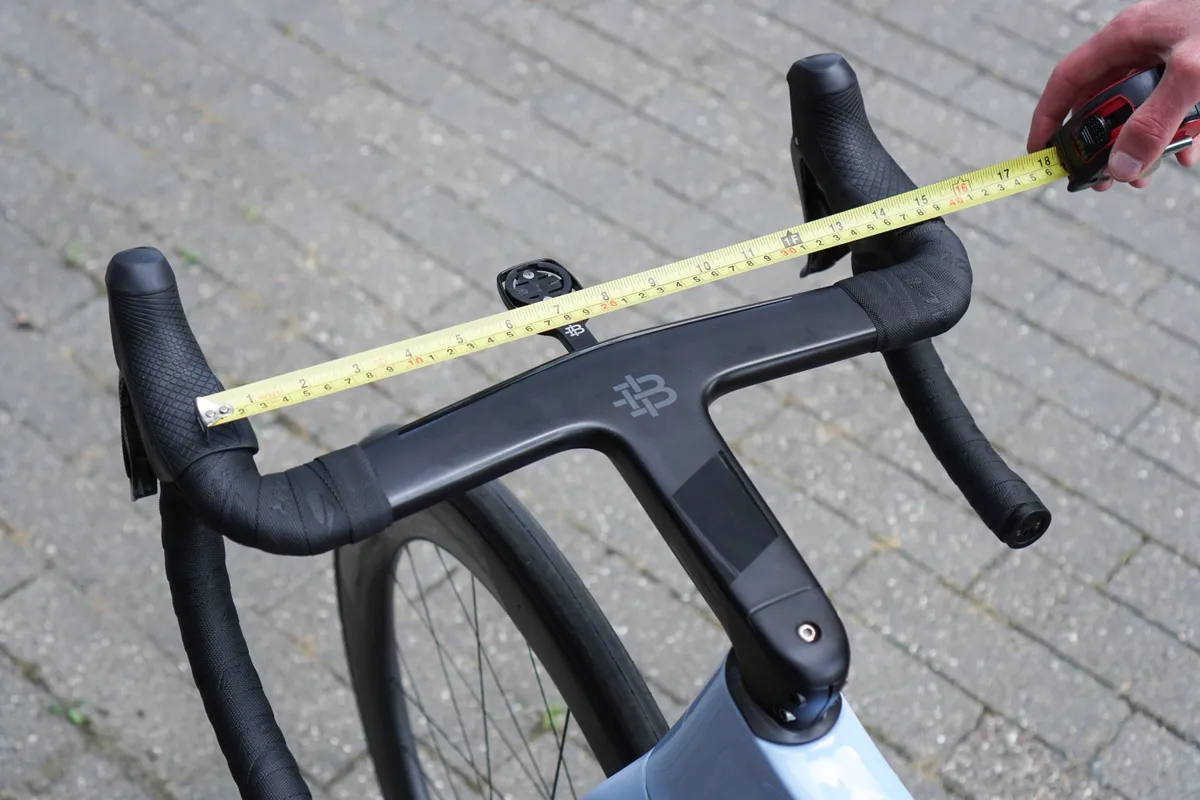The Tour de France tests both riders and equipment to their limits, with countless hours and millions spent behind the scenes ensuring cycling's top teams are running the fastest setups in the sport's greatest race.
Equipment choices are more significant than ever, with teams – and their sponsors – fighting it out to gain an advantage before a pedal is turned.
The backroom staff of the world's top teams now includes personnel tasked with ensuring each rider's setup is as fast as possible, from 'performance engineer' Dan Bigham at Ineos-Grenadiers, to Dr. Ciarán O’Grady at Chris Froome's team, Israel-PremierTech.
As the team's performance coach and aerodynamics specialist, O’Grady is tasked with helping Israel-PremierTech's riders make smart equipment choices, while also working with sponsors to develop the latest products.
We grabbed 10 minutes with O’Grady ahead of stage one of the Tour de France in Copenhagen, while Israel-PremierTech's mechanics were putting the finishing touches to the team's Factor Hanzo time trial bikes for the opening stage.
O’Grady provides a fascinating insight into the team’s tech choices for the 2022 Tour, including tubeless tyres, big chainrings, foam inserts, handlebar width and more.
You can listen to the podcast below – or read on for the full Q&A.

BikeRadar: Great to meet you, Ciarán. Can you tell me a bit about your role with the team?
Ciarán O’Grady: I’m performance coach for Israel-PremierTech. One of my key roles is to be in charge of all the TT equipment and performance. That’s why I’m here in Denmark, looking after our new Factor Hanzo [time trial] bikes, making sure they’re all set up for [stage one].
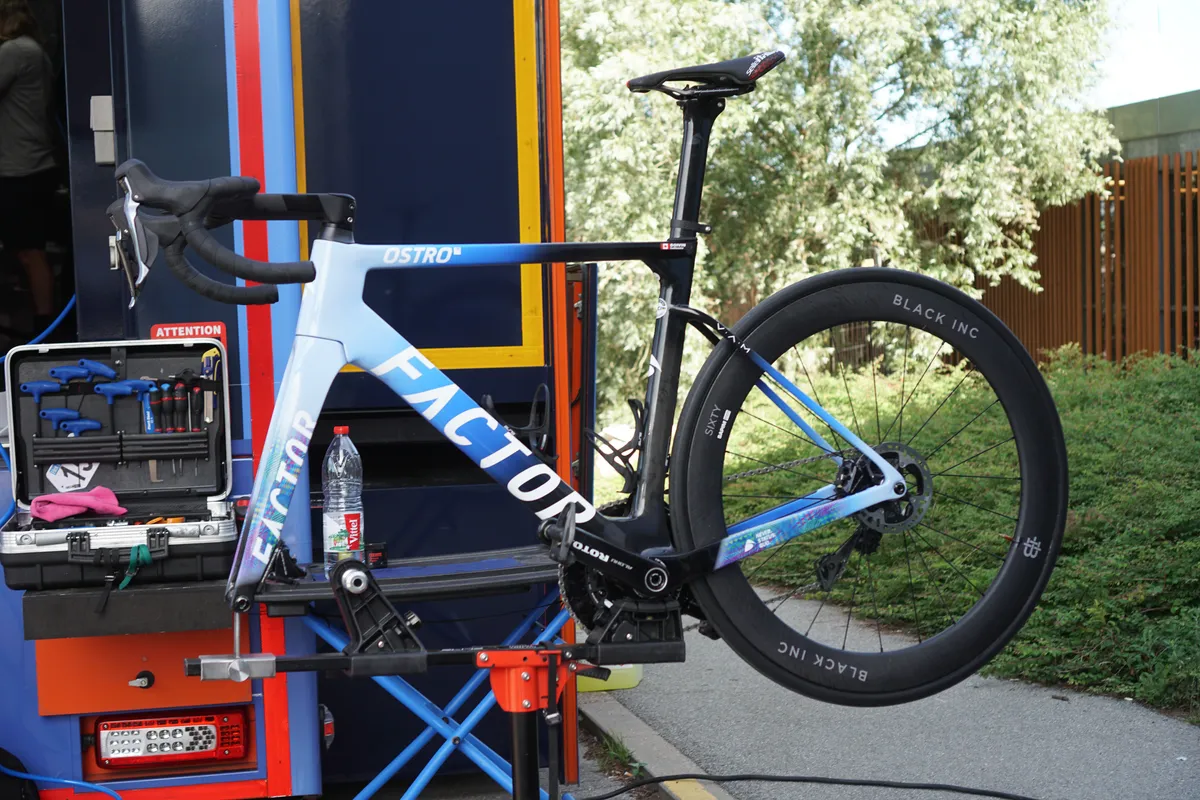
BikeRadar: We’ve got 10 minutes before you need to dash off to the pre-race team meeting. Let’s start with the bikes. You’ve got the Hanzo as you mentioned, but you’ve also got the Factor Ostro VAM for the road. Will all riders be on the Ostro VAM for road stages?
Ciarán O’Grady: Yes, that’s our real weapon of choice for road stages. Factor does have a few other bikes – the One and the O2 – but the Ostro is a jack-of-all-trades. It’s aero enough to be competitive enough on the flat stages and we’ve got bikes down to – or below – the UCI weight limit. Some riders are riding deeper wheels than you might otherwise choose, or would be logical on a climbing stage, just to get them up to the weight, which is a nice problem to have.
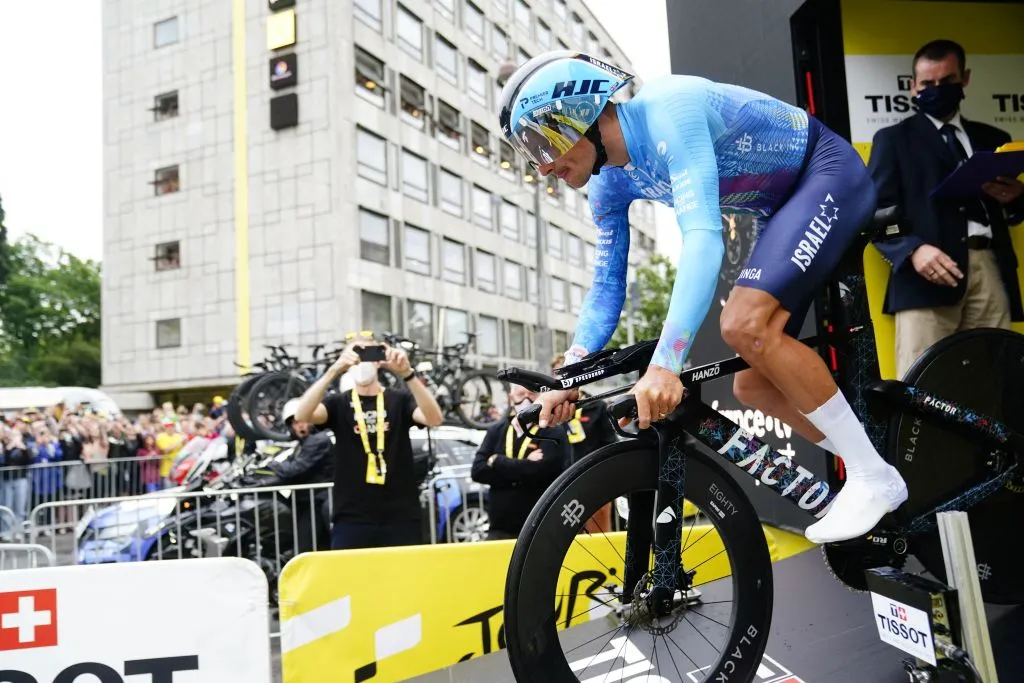
BikeRadar: We’ll come onto the Ostro in a second, but we’ll start with the Hanzo. This podcast will go out after the time trial has happened, so our listeners will know the result by that stage, but can you tell us a bit more about the Hanzo, because it’s only just become publicly available.
Ciarán O’Grady: Yeah, it was a big development project when I joined the team a year-and-a-half ago. I worked closely with Factor and the key time trial riders on the team to really make the fastest bike we could within the new revamped UCI regulations. That’s a big reason why there are really narrow tubes and very unconventional shapes on the bikes.
We were developing it all the way through last year and trialled it in the [2021] Giro, then it started to move towards being a production model before being launched this year. We’ve got most of the guys on the Hanzo and it’s a machine.
BikeRadar: Can you tell me a bit more about the work you do behind the scenes with riders to get them ready for a Tour de France time trial?
Ciarán O’Grady: I’ll be going through the time trial with each rider, doing course recon and prep – letting them know pacing and keeping them up-to-date on weather conditions, equipment selection, tyre pressures, gearing. We’ve got two riders on 1x chainrings, so that has an aerodynamic benefit and a bit of a drivetrain efficiency benefit. All of our riders are using treated chains [for the stage one time trial], which is another boost for the Tour de France.
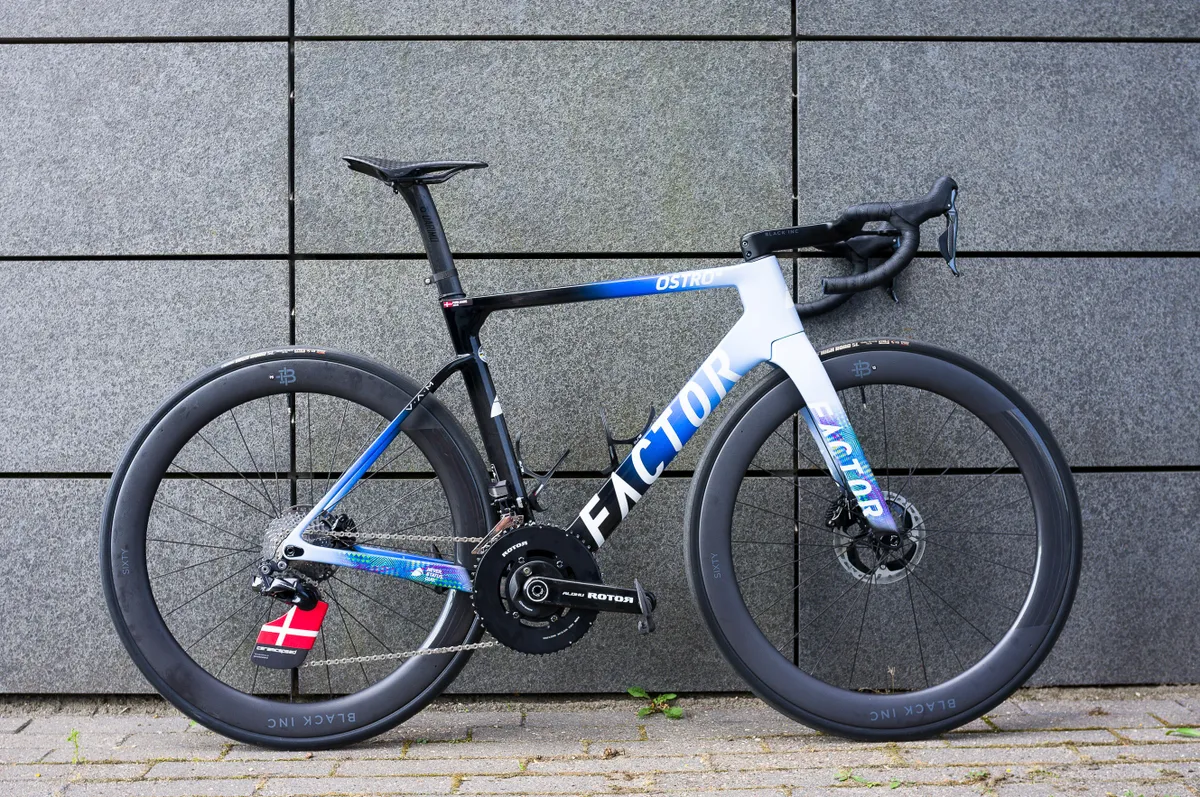
BikeRadar: How much do you try to influence equipment decisions from a performance perspective versus the preferences of individual riders?
Ciarán O’Grady: I try to make as much of it as evidence-based as I can. The feeling of the riders and the choice of the riders, essentially it comes down to that in a lot of cases. You can show them what you think is best, but if they don’t have a good feeling then they’re not going to continue using it. We have plenty of options here at Israel, so there are certainly plenty of individual changes we can make in that regard.
BikeRadar: A big talking point at this year’s Tour de France – and through this year generally – is the move towards tubeless tyres in the pro peloton. It looks like most of your riders are on tubeless throughout?
Ciarán O’Grady: Yeah, we’ve had a lot of riders choosing tubeless, but there are still some stalwarts using tubulars, even on the flat stages. We use tubulars for our climbing wheels, just because they are lighter, but on most of the flat stages, the guys will be on tubeless for the aerodynamic and rolling resistance benefits.

BikeRadar: What kind of tyre widths are you looking at across the time trials and road stages?
Ciarán O’Grady: Time trials are 25mm clinchers with latex tubes. For tubeless, we have 25mm and 28mm versions, and tubulars we have 26mm.
BikeRadar: Another big talking point for the Tour de France this year is the cobbled stage [stage five]. Can you give us some insight as to what we might see from the team on that stage?
Ciarán O’Grady: With our team selection, it’s a stage for survival, so we’ve gone with tubulars for the majority, just because we know that’s tried and tested. We do have a very good tubeless option, but the tubulars will be mounted on the race bikes for that day.
BikeRadar: Talking earlier today, you mentioned a lot of riders will be using foam tyre inserts throughout the race. What’s the thinking behind that?
Ciarán O’Grady: You’re looking at the priority of the rider. If it’s a rider who’s a domestique, in a supporting role, you want to make sure they’re able to continue riding and get to a point when they can be serviced at an optimal point of the race, not necessarily leaving a team leader floundering without any support. [With inserts] they can still potentially ride for a little bit, then the team car can come up. Whereas if it’s a team leader, that process is going to be a lot quicker, because of their priority [so they don’t run inserts]. Usually it’s just down to that, having a bit of insurance.

BikeRadar: I can imagine wheel choice – and the development of wheels from your sponsor Black Inc – is quite a big part of your role, being focused on aerodynamics. Can you talk through some of the wheel selections you will be using throughout the Tour?
Ciarán O’Grady: We’ve got three or four main options. We’ve got the Black Inc 60, our deeper-section wheel in both tubeless and tubular. We also have the Black Inc 45 and Black Inc 30. We have a tubeless version of it [the Black Inc 30] but we’ll be pretty much only using tubulars on that as it’s our climbing wheel.
We’ve got plenty of different options for different stages and different rider roles. So on some of the mountain stages we have riders on deep-section wheels because their role will be over by the time the climbs start.
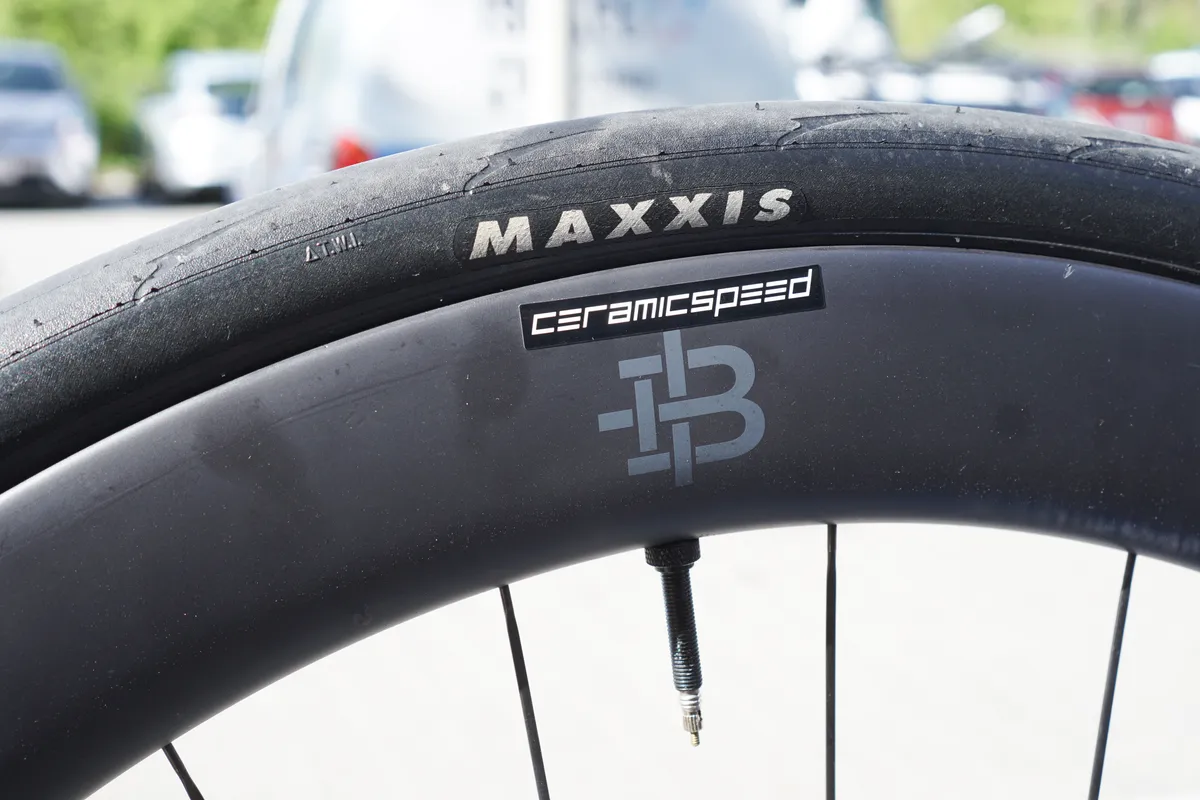
BikeRadar: Just to go back to tyres, earlier today you mentioned there’s a prototype Maxxis tubeless tyre that you’re using at the Tour. What’s the story behind that one?
Ciarán O’Grady: That’s our 28mm tubeless tyre. It was developed this year. We’ve been testing it at the cobbled Classics as well, so it is a cobble-ready tyre, and it’s going to be one of our fastest-rolling tyres. It sits really nicely with the aerodynamic properties of the Black Inc 60s, and Black Inc wheel selection as a whole, so we’re going to be slowly moving toward this.
BikeRadar: On drivetrain choices, we’ve certainly noticed this year that gearing is getting bigger at both ends. It looks like no-one is running less than a 54-tooth chainring on your team. What are the benefits there?
Ciarán O’Grady: The speeds are getting higher, so going from a 53t to a 54t chainring is a fairly easy one to make. Over the years to come, you’re going to see bigger and bigger chainrings, moving up to 55t or 56t, and you already see that on some key sprint stages or windy stages.
For example, at the Tour of Norway, we had bigger chainrings than the other guys and they were wondering why they weren’t able to follow us on descents. So it’s definitely a tactical choice that can pay off if you get it right.
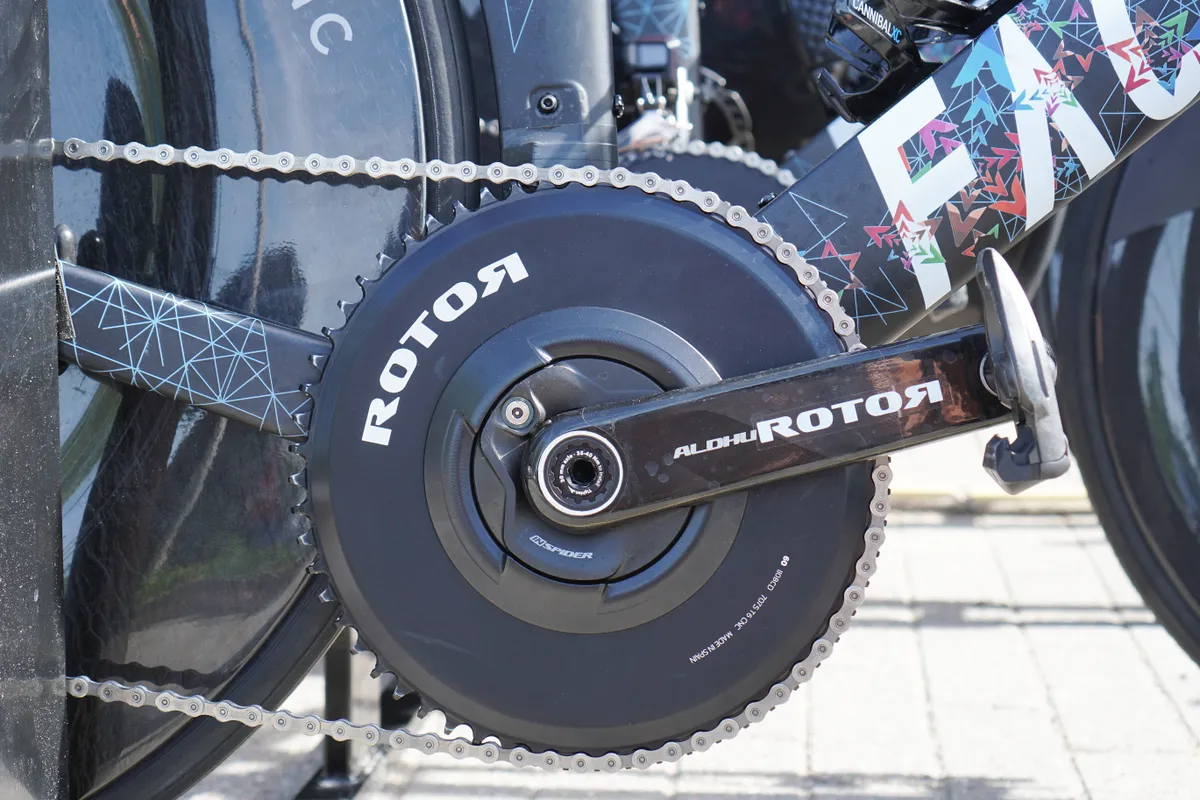
BikeRadar: Who has the biggest chainrings on the team?
Ciarán O’Grady: For the stage one TT, it’s Jakob Fuglsang and Hugo Houle. On the road, usually most of our guys ride a 54t chainring but they might change it up if there’s a massive tailwind or they are a sprinter. Usually, a sprinter would use a 55t or 56t chainring.
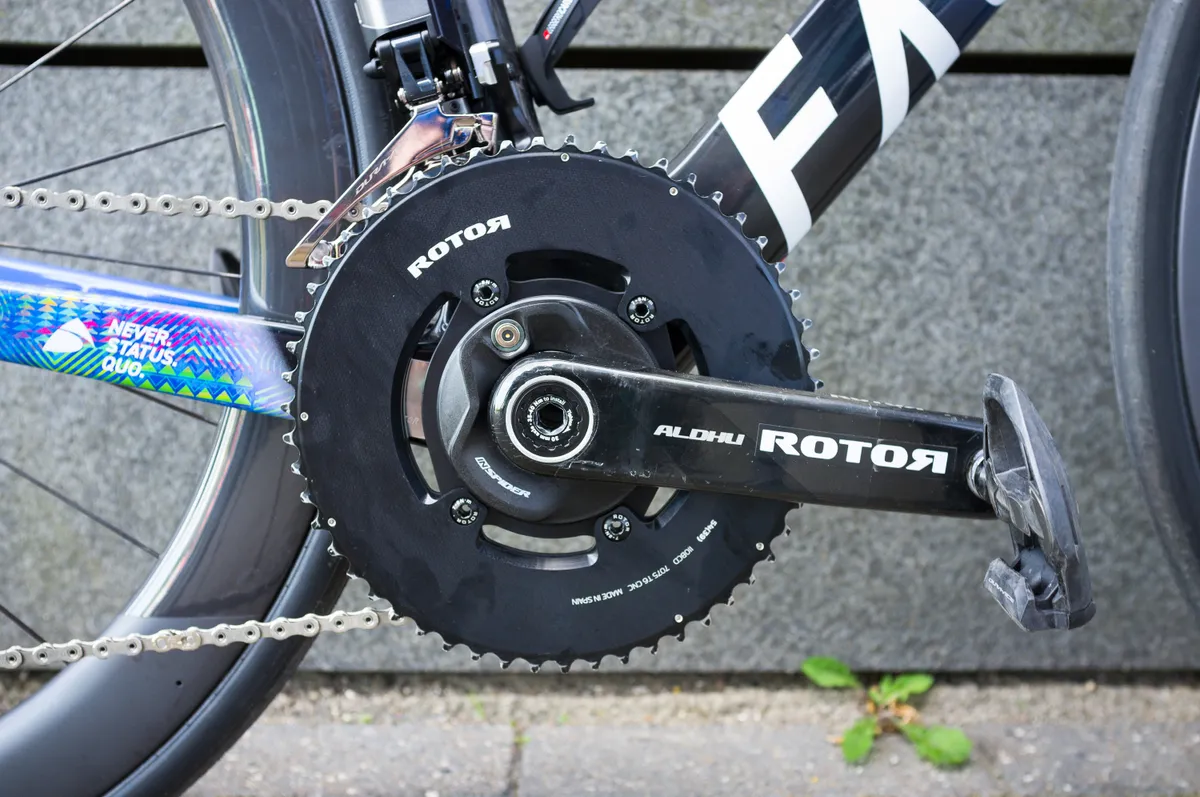
BikeRadar: Have there been any component availability issues for you this year?
Ciarán O’Grady: Availability issues are everywhere this year. We had some bikes that were built up with 12-speed but we made a decision as a team to stay on 11-speed for the whole year, just to make sure all the spares – and spare bikes – are interchangeable.
You don’t want to have one set of race bikes that can't be used, because you don’t have any spare wheels, so we’ve stuck with 11-speed and hopefully soon 12-speed will grace our machines.

BikeRadar: The new CeramicSpeed OSPW Aero jockey wheel design is on your bikes. It’s only worth a couple of watts but it does look cool…
Ciarán O’Grady: Yeah, and the Danish flag gave me a surprise when I saw it on Mike Woods’ bike – I thought he had changed nationality – but then he explained it was for the Copenhagen start. It’s a nice piece of development and it was good to have that partnership with CeramicSpeed so we can have it on our machines.
BikeRadar: Are there any quirky details or unusual setups that any of your riders prefer?
Ciarán O’Grady: One of the things I love is the difference between handlebar tape with our riders. Some of the riders run it pretty close to the stem and there are others who cut it, partly for weight saving, but there’s also an aerodynamic benefit for having it closer to the grips. We’ve got some riders who enjoy it, and some who don’t, but our bikes are pretty lovely and there’s not much tinkering our guys need to do to them.
BikeRadar: Handlebar width is certainly coming down. We’ve measured a few bars from different teams [at the Grand Départ] – 40cm seems to be the maximum, but most riders are in the 30s. Is that the same on your team?
Ciarán O’Grady: Exactly. We’ve got a new handlebar from Black Inc, which has a dropped flare, so we’re running them narrower at the hoods to get the same width on the drops as the previous handlebar, and the riders have been loving that. They’re able to get aero on the tops and still have the leverage on the drops for sprinting and downhills.

